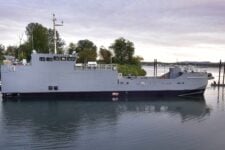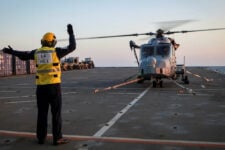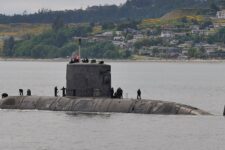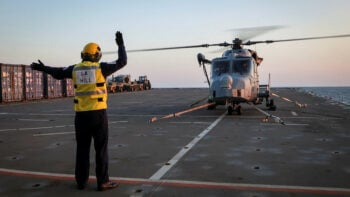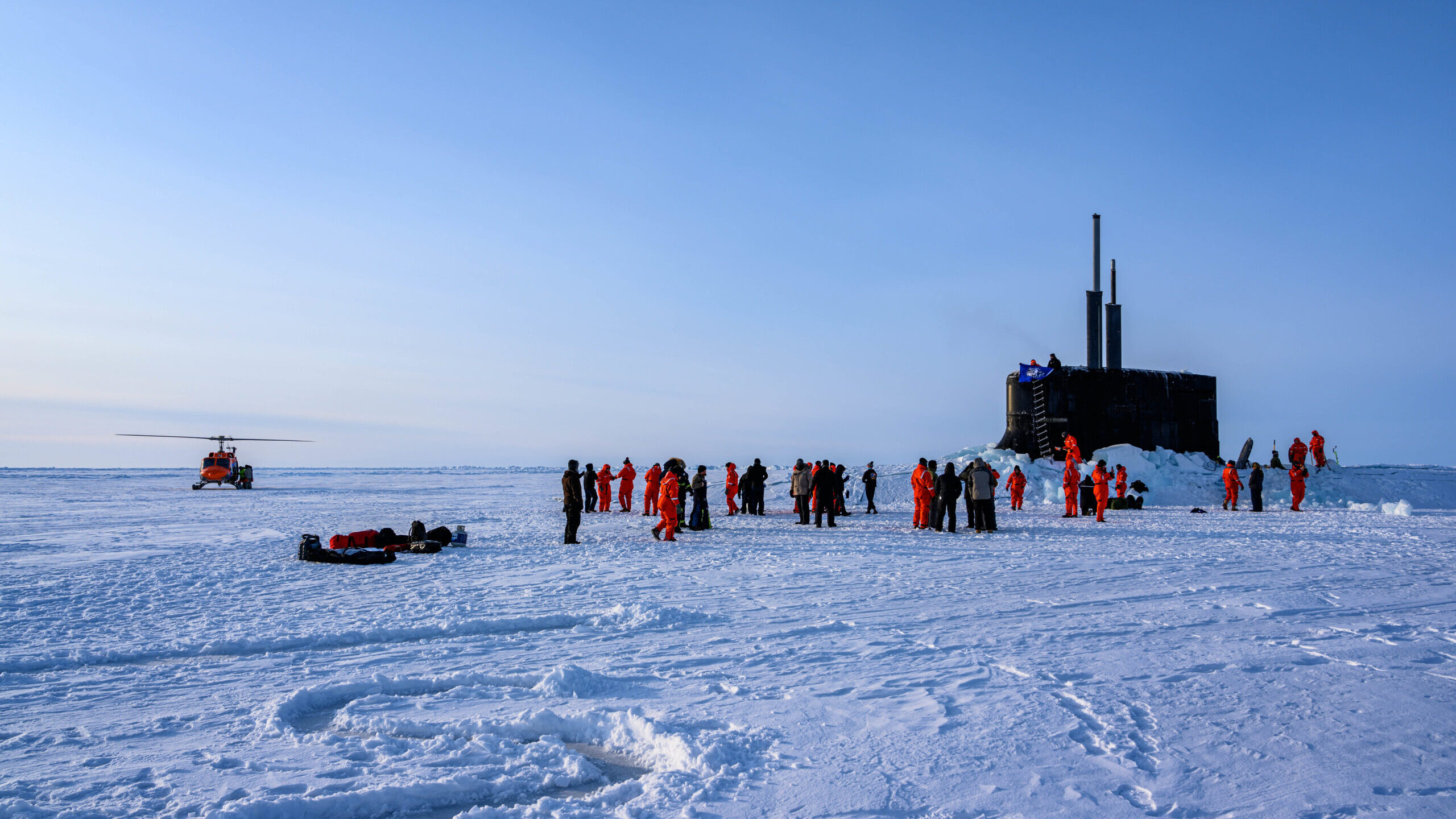
The crew of the Seawolf-class fast-attack submarine Connecticut (SSN 22) roams the ice after surfacing in the Arctic Circle during Ice Exercise (ICEX) 2020. (U.S. Navy photo by Mass Communication Specialist 1st Class Michael B. Zingaro/Released)
NORFOLK, Va. — The melting of the polar ice caps combined with increased Russian ship movements is driving “heightened awareness” of the arctic region among US Navy leadership, who are increasingly concerned about the possibility for geopolitical rivals to make unfounded claims to vital sea lanes and natural resources.
“Russia has made a decision to militarize that space,” Adm. Daryl Caudle, commander of US Fleet Forces, told Breaking Defense in an interview here in August. “That’s increased our need to actually go pay attention to what they’re doing, to make sure we’re not ceding that territory, to make sure they’re not … first to market in an area that has normally not been heavily transited.”
As the head of US Fleet Forces, Caudle is a top advisor and the maritime component commander to US Northern Command chief Gen. Glen VanHerck, whose area of responsibility includes a large portion of the arctic region. (The Navy considers any geography north of the Arctic Circle as part of the region. Specific parts also fall under the responsibility of US European Command and US Indo-Pacific Command.)
During an interview, Caudle said the service has noticed both Russia and China taking more interest in the arctic, particularly Moscow, which is militarizing “their coastline… from coastal defense, cruise missiles, long-range aviation, undersea systems [and] radar systems.”
“We’re seeing an enhancement in how they are viewing that part of their northern border, and how they’re actually patrolling” more often, he said. “Because of that we are concerned about what they may or may not be doing.”
The admiral explained that with the melting of the ice caps, the arctic is becoming one of the fastest routes to move ships between the Atlantic and Pacific Oceans, something Caudle said the Navy has observed Russia doing more frequently. Beyond the military’s interest in those routes, civilian mariners will also inevitably begin using it for commerce — and keeping international sea lanes open is a longstanding mission the US Navy maintains.
Despite the inhospitable conditions, the arctic also holds worthwhile resources and, Caudle said, the US has an inherent interest in ensuring its own rights, as well as those of partners and allies, are respected before any individual country tries to help itself.
In the background of the interview, Caudle’s team was in the midst of Large Scale Exercise 2023, a global training event focused exclusively on assessing the Navy and Marine Corps’ ability to fight with the assets and training they have today.
The admiral’s position as commander of US Fleet Forces also means he is directly responsible to the chief of naval operations for organizing and executing LSE 2023, which took place from Aug. 9 to Aug. 18. (Adm. Michael Gilday on Aug. 14 relinquished his position as CNO to Adm. Lisa Franchetti who has assumed the position of “acting CNO” while an ongoing impasse on Capitol Hill snarls hundreds of military officer nominations.)
“As we watch and simulate forces from Russia in particular, but any country that would have forces that are at those latitudes, then you’re getting Arctic-type of thinking into the exercise,” Caudle said. “How we pick up on movements above the Arctic Circle, how our allies and partners work with us above the Arctic Circle, how we communicate above the Arctic Circle is inherently baked into LSE 23.”
For its part, China, which the US has made no secret about deeming its “pacing threat,” is also keen on keeping itself relevant to the global governance of the arctic region. It has previously declared itself a “near-arctic state,” a title which the US rejected. Designations aside, the Chinese intent in the arctic is clear, a December 2022 RAND study found, even if Beijing has made limited progress.
Caudle said the US views the Arctic Council as the appropriate authority for adjudicating international squabbles in the region and that organization contains eight member countries: United States, Canada, Denmark, Finland, Iceland, Norway, Russia and Sweden.
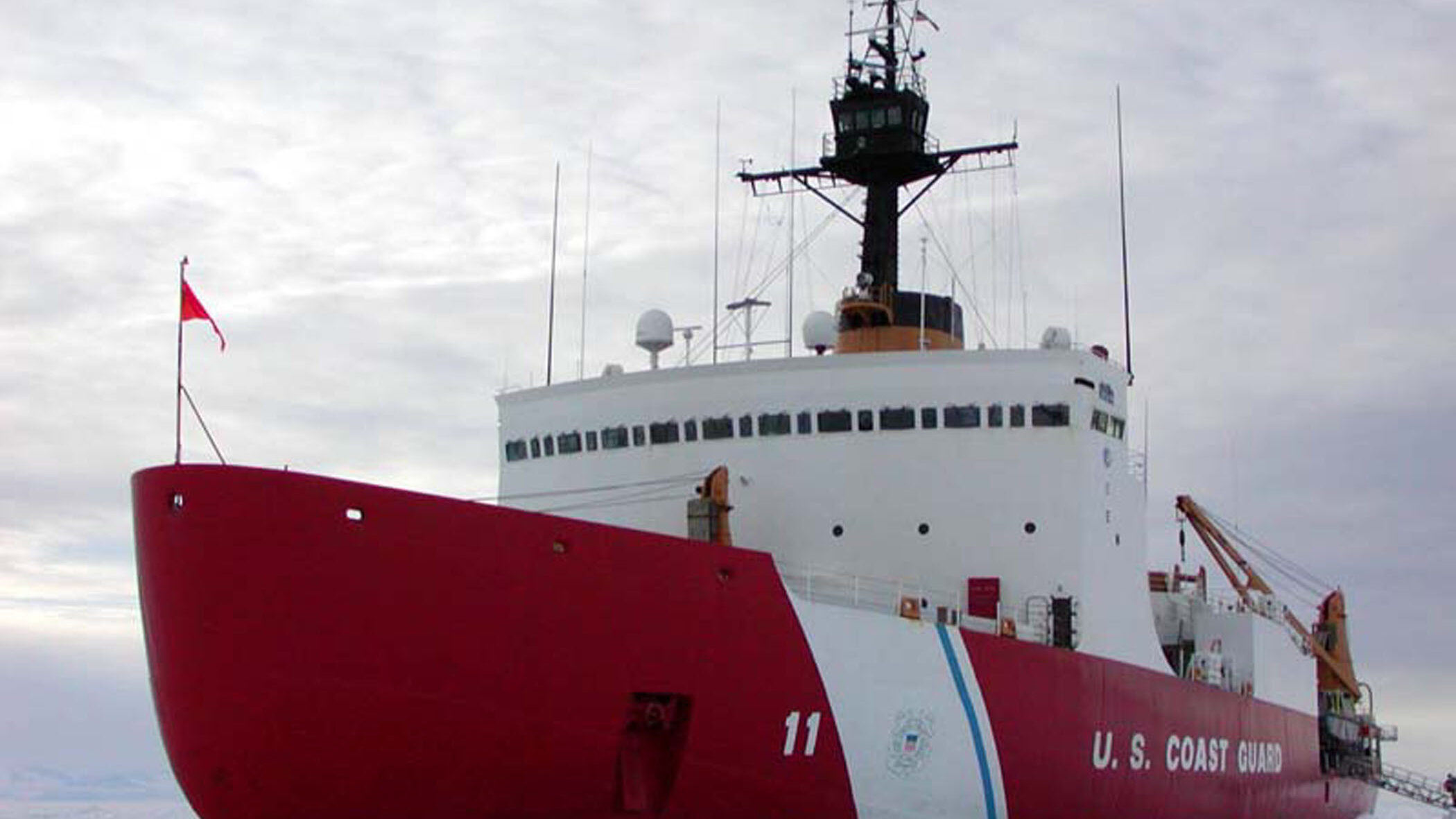
The US Coast Guard ship Polar Sea (WAGB-11) is one of two vessels the Navy had long depended upon to break ice, but the ship has been sidelined by varying problems in recent years. (USCG photo by Rob Rothway)
Navigating The Dangerous High North
The most obvious and immediate challenge for any ship attempting to transit the arctic is the ice — not just what is in the water but also what accumulates on the ship’s exterior. There are only two kinds of vessels the Navy wants operating near ice: nuclear submarines, one of the fleet’s most in-demand assets by global combatant commanders, and icebreakers, of which the sea services are in infamously in short supply.
Save for those two exceptions, “We don’t want ships to be in contact with ice,” Caudle said.
For the ships that do sail into the icy waters, to avoid a “Titanic event,” the Navy has access to a reporting system that effectively tells crews where ice is flowing, but the problems for warships in the high north don’t end there.
Another issue is the fact the satellites most crews depend upon while operating in other parts of the world are not accessible while in the arctic, meaning sailors must be trained on how to use other, more appropriate satellites.
Navigation is also a challenge, Caudle added. Most Navy systems rely on using the Earth’s equator as a point of reference, but that framework becomes unreliable above the Arctic Circle. For crews to navigate, they need to know how to re-orient their systems to rely on the North Pole as the point of reference.
“The ability to operate there takes a lot of training and capability and great hardware,” Caudle said.
The admiral said that although he was opting to be more vocal about the arctic right now, the service has maintained a focus on the region in recent history, predicting it will likely become more accessible and navigable. That future is spelled out in a public strategic document published in 2021, dubbed “Blue Arctic.”
As for when the public might see fresh photos of US nuclear submarines surfacing in the high north, ICEX 2024, the service’s biennial arctic training event, is already in its planning stages.
